Management Discussion and Analysis
Responsible Organisation – Shared Value
Several elements converge into a synergistic operation to make the Bank a responsible organisation, enabling it to sustainably create and share value.
Each of the functional departments steer the operations of the Bank to create sustainable finance to meet the financial ambitions of its varied stakeholders, and to build long-term partnerships. In this process, the Bank is guided by the following principles and standards, as specified by its Sustainability Framework.
- The CBSL Roadmap for Sustainable Finance in Sri Lanka
- The CBSL Direction on Sustainable Finance Activities
- Sustainable Banking Principles of Sri Lanka Banks’ Association
- United Nations (UN) Global Compact Principles
- UN Sustainable Development Goals
The Bank has mapped its sustainability related key performance indicators (KPIs) with the CBSL Road Map for Sustainable Finance in Sri Lanka. The Road Map sets out a series of activities that revolve around six focus areas to implement sustainable finance.
The six focus areas are,
- Financing Vision 2030
- ESG integration into financial market
- Financial inclusion
- Capacity building
- International cooperation
- Measurement and reporting
The Road Map further sets out short, medium and long-term economic, social and environmental goals. Achieving these goals to transit towards a green, inclusive, and balanced economy in Sri Lanka requires large investments in eight sectors - agriculture and food, marine resources, education, transport, energy, urban development and physical planning, health, and water. There is a need to facilitate financial institutions to develop innovative sustainable finance products and services to implement Sri Lanka’s sustainable development agenda, which at the same time opens up new business opportunities for financial institutions and creates business drivers for sustainable finance.
The Road Map has specified action plans for financial institutions, leasing companies and capital markets under the six focus areas listed above. Accordingly, the Bank has developed a number of KPIs under each of the six focus areas, with responsibilities assigned for relevant departments, identified the underlying SDGs, and monitoring the progress on a quarterly basis.

Whilst aligning with the above guiding principles, the Bank makes banking inclusive and affordable whilst preserving the environment and ensuring no one is left behind in the journey towards long-term sustainability.
As a responsible organisation, the Bank nurtures a green and safe workplace, a conducive work culture, and a sustainable supply chain.
Green and safe workplace
1. Sustainable finance: Affordable and inclusive finance
Sustainable finance includes a broad range of elements, namely the environment (low-carbon, climate and green facets), society, economics and governance. As a leading bank in Sri Lanka, Commercial Bank stays true to the core values of sustainable finance, championing social, environmental, economic and governance aspects across all its operations.
The KPIs of Sustainable Finance that the Bank measures its core values of sustainability from the grassroots level and upwards highlights the Bank’s commitment towards the perpetuation of society and nature, as part of its mandate.

Source: UNEP, 2016

While sustainable banking includes a strong suite of services, the Bank has established sound monitoring and evaluation processes, and a comprehensive reporting mechanism to report the progress of sustainable banking. In Financial Year 2022, the Bank collaborated with Market Development Facility organisation (MDF), an NGO managed by Australian Government that provides sustainable economic development to develop farmers and micro producers in relation to sustainable finance. Supporting and developing members of community-based organisations including farmers, fishermen, cottage industries, women-led and other micro businesses facilitate a sustainable supply chain.
The Bank has established an EWS to identify underperforming customers and lend the necessary support to turnaround the business and improve their financial position. At the SME Trade Fair, the Bank collaborated with the Sustainable Energy Authority (SEA) to conduct an awareness session to SMEs, to enhance their business acumen and financial literacy.
The Bank also granted 32 Flexi-Payment Plan loans to set up solar powered units at a cumulative value of Rs. 24 Mn. during the year under review championing financial inclusion and green practices simultaneously.
The Bank uses key KPIs as direct measurables to assess the Bank’s objectives in both its corporate mandate and its community and environmental responsibilities. The following table includes 11 key KPIs out of the suite of KPIs the Bank uses to assess its sustainable banking performance, along with the respective the CBSL sustainability pillar, the Bank’s sustainability pillar, and the United Nations Sustainable Development Goals (UN SDGs) the Bank contributed to.
Table – 15: Aligning the Bank’s sustainability pillars with those of CBSL
| The CBSL pillar | Commercial Bank pillar | UN SDG | |
| New strategies and services introduced to support Micro customers | Financing Vision 2030 | Sustainable Banking | 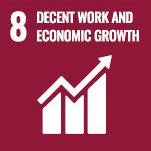 |
| Increasing Green Financing disbursements by 25% | Financing Vision 2030 | Sustainable Banking | 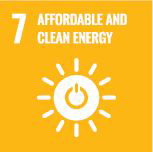 |
| Develop innovative loan products in line with Bank’s green commitment | Financing Vision 2030 | Sustainable Banking |  |
| Achieve growth in WSME portfolio of the Bank | Financing Vision 2030 | Sustainable Banking |  |
| Promote green loans and leases, including initiatives such as rooftop solar, hydro, and wind power schemes, to encourage sustainable and environmentally-friendly practices. | Financing Vision 2030 | Sustainable Banking |  |
| Promote financing export-oriented projects and import substitutes | Financial inclusion | Sustainable Banking |  |
| Ensure Regulatory Compliance related to environment and social risk management, disclosures & reporting | ESG integration into financial market | Sustainable Banking |  |
| Participate in and learn from international collaborations, platforms and partnerships | International cooperation | Sustainable Banking | 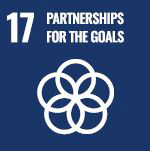 |
| Establish monitoring and evaluation mechanisms | Measurement and reporting | Sustainable Banking | 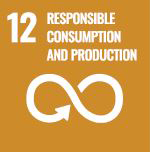 |
| Arranging training for staff to create awareness on sustainable finance | Capacity building | Responsible Organisation |  |
| Minimise paper usage and ancillary resources | Financing Vision 2030 | Responsible Organisation |  |
| 11 Key Performance Indicators (A Subset) | 6 pillars | 2 pillars * | 5 SDGs |
*Note: there are three pillars in the Bank’s overall Sustainability Framework out of which two (Responsible Organization (RO) and Sustainable Banking (SB)) are represented here.
2. Peaking in tough times: Optimised operations
The Human Resources Division of the Bank functioned throughout 2022 to steer its employees through the stresses of the unprecedented operating context. The Bank extended stewardship of care to each employee in a time of crisis, leveraging remedial measures to not just shift gears to face local stresses but to interconnect, synergise, and efficiently manage the human resources of the Bank. In a year that saw the apex leadership of the Bank change hands, the HR division inculcated a culture of supporting and engaging the employees to be resilient and agile.
Several programmes were conducted to facilitate business operations during the year under review. The Bank deployed a fleet of 20 buses to enable employees to commute to work safely. Several strategic promotions were effected and focus was given to employee training and development by executing different learning platforms and training modules. Furthermore, employee career planning, succession planning of middle management and at department levels, leadership development, and improving female participation in management were areas of priority as well. The employee app (ComLink) was launched and a salary survey was conducted to enhance the value proposition delivered to employees.
![]()
To effectively manage the human resources in a time of crisis, the HR division temporarily relocated staff members to the Bank branch nearest to the employee’s home. Amid a challenging period, the Bank was successful in providing an uninterrupted service, although some Bank branches functioned for a limited number of hours. 792 staff members infected with COVID-19 were provided with medical facilities with minimal delay while 107 staff members were provided quarantine facilities, all at the expense of the Bank.
Employee morale and safety: Motivating vocations
The Bank gave high emphasis to employee morale and safety in a disruptive environment that prevailed during the year. Buffering of employees from both external and internal stresses was handled with steadfast vigilance while leveraging care. Cushioning of employee livelihoods, health, and well-being, while championing the collective strength of the employee base were key events of the Bank in the year 2022.
Adapting and adopting: Scaling operations
To ensure uninterrupted banking operations amid the crisis, the Bank astutely managed stocks of consumables, found pragmatic partners in the supply of fuel for the generation of electricity in a time of fuel shortages, and lowered operational expenses using effective strategies.
Whilst strengthening the security for all its stakeholders, the Bank strategically planned to gradually phase out electricity generation through power generators, and to install solar panels, when possible, to move to renewable energy generation. Although solar panels are not feasible for all Commercial Bank branches, there is a strong movement towards cleaner energy, with off-grid solar power generation now an actuality in 71 Bank branches.
Table – 16: Power generated through renewable sources
| 2022 | 2021 | |
| Power generated through renewable sources (%) | 4.38 | 2.35 |
| No of branches connected with off-grid solar power generation | 71 | 66 |
Cost optimisation was another initiative that ensured the continuity of banking operations, while the Bank undertook an “open” idea box policy for all employees of the Bank on how to improve service delivery during volatile times. Furthermore, branches where business volumes were relatively low were scaled down to better navigate lean times of growth.
An expanding ecosystem: Prudent reach
The Bank augmented its branch network by setting up a branch in Kirillawala in 2022. Two more branches in Anamaduwa and Kanthale will be opened in the ensuing year.
Being a leader in sustainable eco-friendly practices, the Bank made quantum leaps in going green, by implementing green architecture models, which are now synonymous with the Bank branches in Jaffna and Trincomalee. This has helped to reduce carbon and water footprints. Going forward, more branches will be equipped with renewable energy generated from solar panels to streamline the Bank’s sustainability focus.
The Bank has fully adopted one-to-one communication with customers by way of inbound and outbound calling through the Bank’s 24x7 tri-lingual integrated Contact Centre. This provides speedy and convenient assistance to all customer queries in addition to providing the Bank the ability to directly connect with customers in a sustainable manner. Customer satisfaction on the services offered by the Contact Centre of the Bank showed the highest ratings compared to competitors.
Network of delivery points in Sri Lanka and Bangladesh

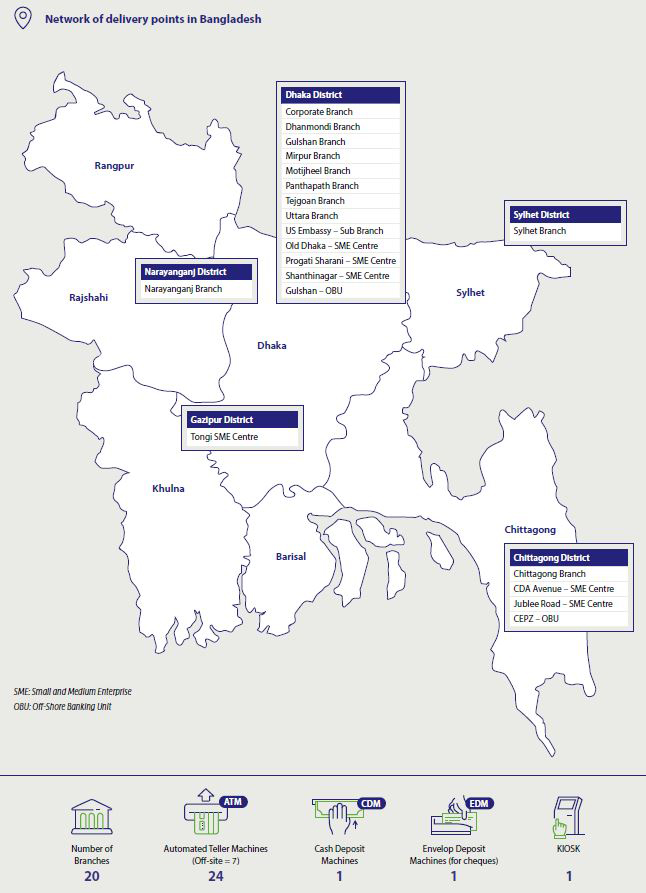
A digitalised culture: At the forefront
There was a significant reduction in the paper footprint of the Bank, which was visible from several cross-sectional areas of internal and outward processes. Digitisation of inward remittances enabled to reduce the paperwork originating from remittances-based printing and the automation of the external audit process too contributed to the move towards a paperless culture.
The upgrade of the AS400 server empowers the core banking system to cater to increasing workloads and traffic changes, whilst providing high performance, securely and reliably. The automation of the Credit Information Bureau (CRIB) system has enhanced the decision-making process of the Bank, and reduced the man hours and related costs. The convenience of an integrated loan appraisal system which resulted in enhanced efficiency in report generation was a novel development during the year.
Green finance: A verdant manifesto
Commercial Bank’s commitment towards green measures is articulated through the Bank’s Sustainability vision, “to be a responsible financial service provider by enabling and empowering people, enterprises, and communities, towards environmentally-responsible, socially-inclusive and economically-enriching growth”.
The Bank’s climate strategy paves the way for climate considerations to be integrated into the Bank’s core product and service offerings via a three-pronged approach; Green Financing, Internal capacity building to support Green Financing, and supporting clients and customers to reduce their environmental footprint.
Green Financing Vision of Commercial Bank:
- To become the No.1 Green Financing institution in Sri Lanka
- To commit over USD 1 Bn. to Green Financing over the period 2017 to 2030
- To grow the Green Financing portfolio to a significant part of the Bank’s lending portfolio
Green Finance has been a focus of the Bank in the last 5 years, even in the absence of stringent prescriptive Green Banking standards. The Bank implemented a green finance taxonomy system – a methodology to safeguard the environmental footprint, and to identify GHG emitting activities of the borrowers, even before the CBSL issued the Mandatory Green Finance Taxonomy. The voluntary measurements were largely based on the climate footprint, while the external prescribed system put in place by the CBSL is more multi-channeled with climate, environment, pollution, ecological change, and social impact, all being necessary components of the green finance taxonomy.

In the current context, the Bank lending was used to power renewable energy plants, that borrowers sold to the Ceylon Electricity Board which has a monopoly in purchasing electricity from private vendors. However, lending was subdued during 2022, due to the high interest rates that prevailed and the CEB tariff hike.

In 2020, the Bank secured a USD 50 Mn. loan from the UK-based CDC Group, specifically to increase the Bank’s share of Green Financing to SMEs, in turn helping Sri Lanka to achieve national climate goals. Furthermore, Commercial Bank was one of the first to apply the Social and Environmental Risk Management System (SEMS) in Sri Lanka to screen lending projects to contain practices that could harm the environment. This has continued to ensure the Bank provides lending and carries out business with only environmentally-friendly organisations. In parallel, an internal drive was initiated to encourage and motivate staff members to promote green finance solutions to customers. Strong emphasis was also placed on promoting the Diribala green development loans to facilitate the installation of roof-top solar power panels. The Green Financing portfolio of the Bank increased to 16.476 Bn. during the year with a growth of 5.71%.
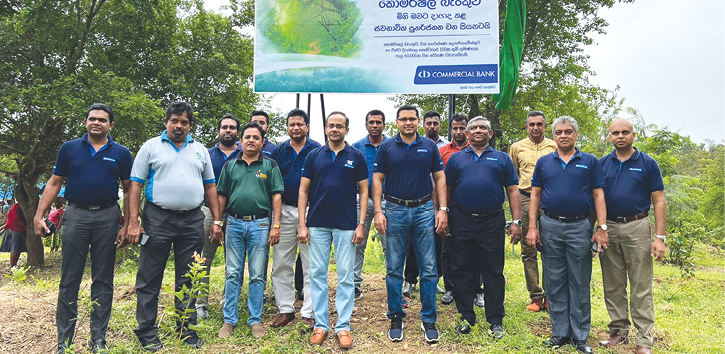
The Bank has adopted the Climate Assessment for Financial Institutions (CAFI) tool developed by the International Finance Corporation (IFC), a member of World Bank Group, to measure and report on the GHG emission reduction attributed to the Bank’s Green Financing portfolio. The Bank adopted digital signatures as an operational process whereby allowing customers to submit digital documents instead of physical paper-based documentation to the Bank.
Commercial Bank is the first Sri Lankan bank to accept digitally signed documents from business customers using LankaSign operated by LankaClear, the only commercially operating Certification Authority in the country that complies with the Electronic Transactions Act.
As a Green organisation, the Bank places strategic importance in migrating customers to sustainable digital banking channels. The Bank has introduced six Banking Apps (ComBank Digital online banking platform, Flash Digital Bank Account, Q+ Payment App, ComBank ePassbook, ComBank eSlip and ComBank Remit Plus) and social network Banking with WhatsApp Banking and Viber Banking. During the year under review, the Bank continued to encourage customers to migrate to Digital Channels, aligned with the Bank’s digital vision of building a digital economy where each customer is engaged at their level of techno-literacy. The Bank’s Digital Road Map is focused on retail customers encompassing paperless and sustainable digital products, services, processes, and touchpoints. The number of customer transactions carried through digital channels compared to over-the-counter transactions has increased to 246% in 2022. Furthermore, the Apps introduced by the Bank as a green initiative have gained the highest ratings from users compared to the competitors, for all parameters.
Table – 17: The performance of Commercial Bank mobile Apps
| Mobile Apps | Satisfaction rating scale | |
| Commercial Bank | All competitors | |
| Ease of downloading the application | 4.04 | 3.48 |
| Ease of logging on to the application | 3.91 | 3.73 |
| Ease of navigating and transacting through the application | 4.10 | 3.61 |
| Level of security offered | 4.18 | 3.74 |
| Time taken to transact on telephone banking | 3.95 | 3.72 |
| Technical and customer support offered for the service through in-app support and call centre | 4.10 | 3.64 |
| Ease of checking account statements/transactions via mobile App | 4.08 | 3.82 |
| Variety of functions offered through mobile banking/mobile App (balance inquiries, fund transfers, bill payments etc.) | 4.12 | 3.58 |
| Loyalty schemes offered | 4.02 | 3.64 |
| Average | 4.06 | 3.66 |
Satisfaction rating scale
1 – Not at all satisfied 2 – Not satisfied 3 – Satisfied 4 – Very satisfied 5 – Extremely satisfied
Source: Kantar retail customer satisfaction survey 2021
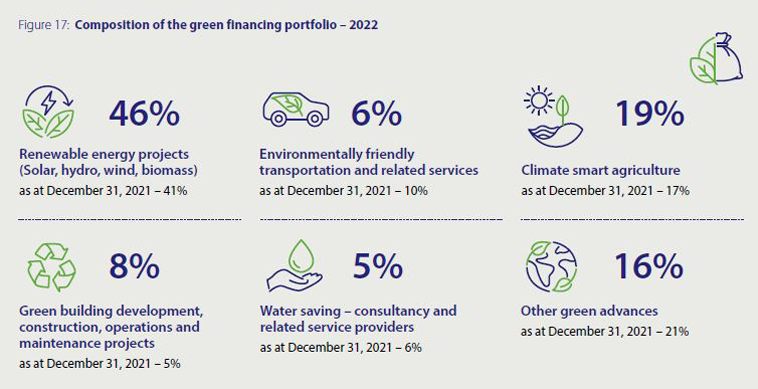
3. Workplace culture
Raising the employee morale through engagement: Rising to the occasion
To empower employee engagement, the backlog of events from 2020-2022 was brought forward culminating in the Annual Award Ceremony that took into consideration a two-year window. The annual award ceremony was a grand affair, celebrating the employee contributions in a testing time and rewarding employees who stood above the rest in their contribution to the continuity of banking operations. Furthermore, events such as a fun-packed employee carnival, and a Christmas Party, are some of the events that were organised to boost employee morale and to ingrain a sense of joie de vivre within the Commercial Bank family.
To flourish is to transcend the contemporary “pandemic” limitations, and the employees brought respect and loyalty to both the Bank and the banking family, by providing yeoman service to the stakeholders, who have trusted the Bank with their valued savings. The morale was a key contributing factor boosted by a culture that draws from personalising and humanising employees, harvesting the best from an employee’s work ethic, and ensuring that their feel-good factor is maximally weatherproofed from unwanted stresses. The Commercial Bank family newsletter “Compulse” continued to engage the employees, keeping each other contemporary and endeavouring on their vocational pursuits, as well as in hobbies and pastimes. There was also improved connectivity and communication between Bank branches, setting a precedent for more fluency in cross-functional and cross-branch dialogues.
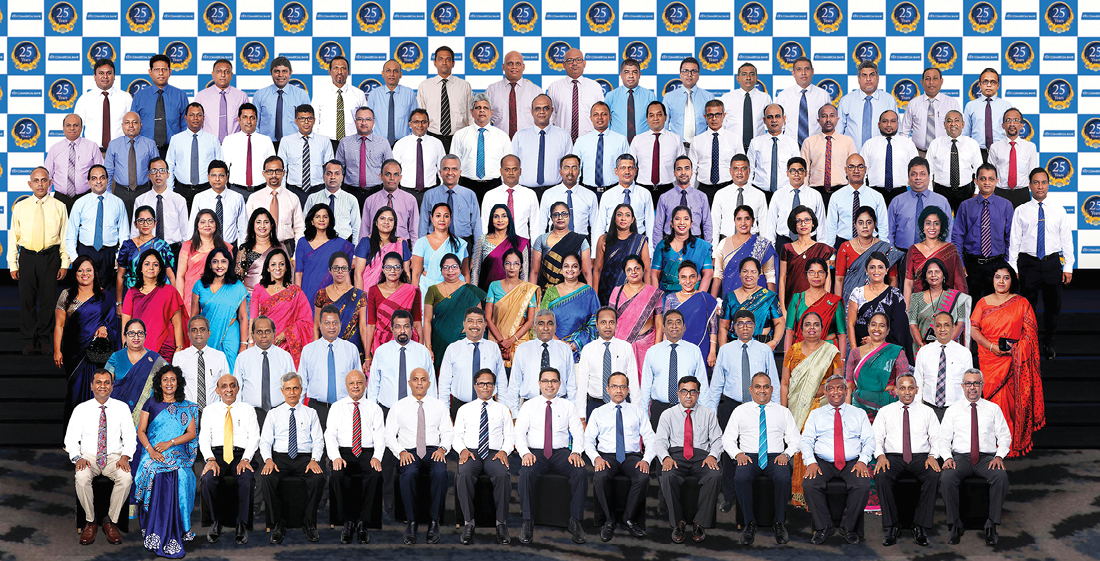
Furthermore, the loyalty and 25 years of service of 90 employees of the Bank was celebrated at the 2022 edition of the Bank’s annual Seniority Awards ceremony where the employees were felicitated with valuable gifts and certificates of appreciation. Many of the recipients of these awards were school leavers when they joined the Bank in 1997, and now hold key positions in Corporate Management and in various departments and branches.
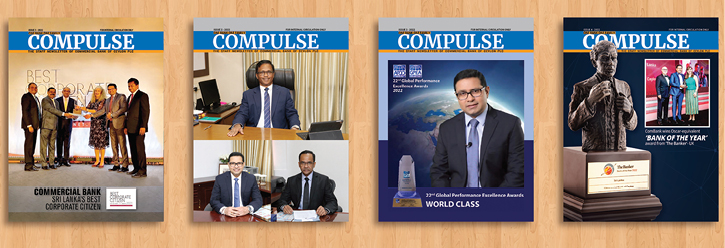
The banking vocation: Impassioned caretakers
The banking vocation is multifaceted in its many roles and responsibilities in its primary functions as a financial intermediary and a maturity transformer. To keep the banking operations at a peak, there should be both job security and as well as a means to develop an employee’s repertoire of skills and talents. The banking vocation in 2022, stood uplifted by the vocational purposing of each employee to the bigger banking ecosystem, the provision of diversified training programmes, a special monthly allowance to staff in certain grades, hosting of talent shows for the development of employee skill sets, provision of work-from-home and hybrid work arrangements, facilitation of commuting of the employees by pioneering logistics (a bus service), and appreciating the staff by rewarding promotions, awards, and financial reimbursements.
While several facets changed in their outlook, the ergonomic landscapes and the backdrop of advertising and marketing of hiring processes did not undergo significant modifications in 2022. In the current operational context, there is anticipation that there will be a re-evaluation of the operational dimensions of the Human Resources Division in 2023.
Brilliant colours of diversity: Financial strokes
While bringing the colours of diversity of the workforce to the fore, the Bank engaged in many cultural activities that connected with its diversified workforce. Christmas Carols, and other events were held to connect with the cultural, ethnic, and religious identities of the workforce, and to inculcate a sense of belonging to the bigger picture. Female participation in management was improved by the promotion of 35 employees into Senior Management. Examples of gender-sensitive practices assured by the Bank’s leadership include the provisioning of mandatory leave for mothers-to-be during the third wave of the COVID-19 pandemic, thereby ensuring paramount safety before any other factor.
The Bank's promotion policy elaborates the staff promotion procedure for all grades. It includes appointment/career advancement for all grades and promotions up to the level of Corporate Management. As a policy, all promotions as well as recruitments are done based on merit – on a scheme which clearly sets out the relevant criteria. Through these established criteria, gender biasness is eliminated from the Bank's promotion procedure.
Diversity is seen as an essential palette that provides colour to the banking units and engaging the workforce to grow in a multi-cultural landscape to improve each employee’s raison d’etre (purpose of life). Such diversity fulfills not just an ecosystem role, but also brightens the Banking family with their unique colours.

Table – 18: Employees by category and gender – Bank
| As at December 31, 2022 | Age 18-30 years | Age 31-50 years | Age over 50 years | Total | % | |||
| Male | Female | Male | Female | Male | Female | |||
| Corporate Management | – | – | 4 | – | 21 | 5 | 30 | 0.59 |
| Executive Officers | 86 | 54 | 1,409 | 296 | 220 | 112 | 2,177 | 42.51 |
| Junior Executive Assistants & Allied Grades | 876 | 240 | 939 | 297 | 29 | 68 | 2,449 | 47.82 |
| Banking Trainees | 273 | 143 | 6 | 1 | 2 | – | 425 | 8.30 |
| Office Assistants & Others | – | – | 9 | – | 30 | 1 | 40 | 0.78 |
| Total | 1,235 | 437 | 2,367 | 594 | 302 | 186 | 5,121 | 100.00 |
| As a % of total | 24.12 | 8.53 | 46.22 | 11.60 | 5.90 | 3.63 | 100.00 | |


Table – 19: Employees by type and gender
| As of December 31, 2022 | Sri Lanka | Bangladesh | Total | |||
| % | % | % | ||||
| Permanent and contract employees | ||||||
| Female | 1,136 | 23.65 | 81 | 25.55 | 1,217 | 23.76 |
| – Permanent | 1,135 | 23.63 | 67 | 21.14 | 1,202 | 23.47 |
| – Contract | 1 | 0.02 | 14 | 4.42 | 15 | 0.29 |
| Male | 3,668 | 76.35 | 236 | 74.45 | 3,904 | 76.24 |
| – Permanent | 3,667 | 76.33 | 191 | 60.25 | 3,858 | 75.34 |
| – Contract | 1 | 0.02 | 45 | 14.20 | 46 | 0.90 |
| Total | 4,804 | 100.00 | 317 | 100.00 | 5,121 | 100.00 |
| Outsourced employees | ||||||
| – Female | 220 | 39.29 | 4 | 4.17 | 224 | 34.15 |
| – Male | 340 | 60.71 | 92 | 95.83 | 432 | 65.85 |
| Total | 560 | 100.00 | 96 | 100.00 | 656 | 100.00 |
All employees of the Bank are full time employees.
Table – 20: Female employees as of December 31, 2022
| 2022 | 2021 | 2020 | |
| Number of female employees | 1,217 | 1,201 | 1,185 |
| Female employees in Senior Management positions as a percentage of total employment (%) | 0.98 | 0.92 | 0.92 |
| Percentage of female employees promoted (%) | 19.13 | 16.80 | 21.80 |
| Percentage of females recruited (%) | 29.00 | 35.50 | 27.21 |
| Percentage of females in key geographical locations (of all female employees in the Bank) |
|||
| Sri Lanka | |||
| – Western Province (%) | 75.62 | 75.34 | 81.01 |
| – Outstations (%) | 24.38 | 24.66 | 18.99 |
| Bangladesh | |||
| – Dhaka (%) | 76.54 | 81.40 | 75.86 |
| – Other locations (%) | 23.46 | 18.60 | 24.14 |
| Percentage of female exits (includes retirees) | 31.31 | 31.00 | 32.87 |
Remuneration and job security: Generosity personified
Prioritising the continuity of remuneration and ensuring job security to its employees, the annual performance appraisals were conducted in 2022, and all increments and bonus entitlements as per the Bank’s Pay-for-Performance policy were paid in full. In this way, all performance-based bonus entitlements for the year were rewarded. Furthermore, the Defined Contribution Pension Fund launched in 2020, in tandem with the Bank’s 100th anniversary providing coverage for employees who are not covered by the pension fund, safeguards employees with future financial assurances.
A yearly average increment of 10% was attributed to each employee, to help offset inflation and to provide better means of coping with the high cost of living. The HR division of the Bank which operated with the motto of “Caring for its Employees” in 2022, hopes to capitalise on the theme “Believe in Commercial Bank” for 2023, building on the momentum of prudent confidence and solidarity that the Bank has always relied upon.
The banking ecosystem experienced a brain drain with nearly 150 employees migrating overseas to greener pastures in 2022. The Bank also absorbed 299 new employees during the year under review to fill the resulting vacancies. Talent upskilling and career development were two key pursuits supported by the Bank to equip employees with the required capabilities for their professional growth.
The Bank also continued to outsource services of Digital Assistants and call centre operations. Outbound excursions were also performed to improve the harmony of the many hierarchical and geographical branches of the banking operations, into a flourishing singular system.
Table – 21: Retention rate (Maternity leave)
| Number of Employees | 2022 | 2021 | 2020 |
| Availed leave during the year | 49 | 50 | 69 |
| Due to return during the year | 54 | 59 | 73 |
| Returned during the year | 54 | 59 | 73 |
| Returned during prior year | 59 | 73 | 64 |
| Still employed after 12 months | 56 | 70 | 61 |
| Return ratio % | 100 | 100 | 100 |
| Retained ratio % | 94.92 | 95.89 | 95.31 |
Staff training: Learning curves
Training and Development continued to be a vital component of the Bank’s Human Resource Development Philosophy. Based on its robust training and development strategy, the Bank focused on equipping its staff with up-to-date, relevant skillsets and necessary competencies to deliver increased value. Collaborating with the Digital Banking Unit, the Retail Products Division engaged in a cross-functional knowledge-sharing/skills development initiative to foster a digitally-aware culture that facilitates more effective product and feature development and deployment of such tech-based products. Regular staff training programmes were conducted to ensure accuracy, efficiency, and fluency in pawning transactions, to facilitate the overall valuation process.
The newly refurbished state-of-the-art auditorium was an addition to the Commercial Bank outfit, housed in the Union Place branch building, that caters to the modern requirements of being able to host a diverse range of events, such as product launches, competitions, staff training programmes, and cultural extravaganzas.
During the year, the Bank invested Rs. 65.375 Mn., on training and development and delivered on average 26 hours of training per employee.
Table – 22: Training statistics
| 2022 | 2021 | 2020 | 2019 | 2018 | |
| Total training cost (Rs. Mn.) | 65.375 | 22.955 | 15.183 | 54.695 | 47.119 |
| Total training hours | 151,448 | 79,928 | 43,961 | 142,950 | 130,754 |
| Total E-learning hours | 1,319 | 7,756 | 7,161 | 1,111 | 1,309 |
| Percentage of training through E-learning (%) | 0.87 | 9.70 | 14.01 | 0.77 | 0.99 |
| Total investments on virtual training (Rs. Mn.) | 14.435 | 16.958 | 3.455 | 0.315 | 0.333 |
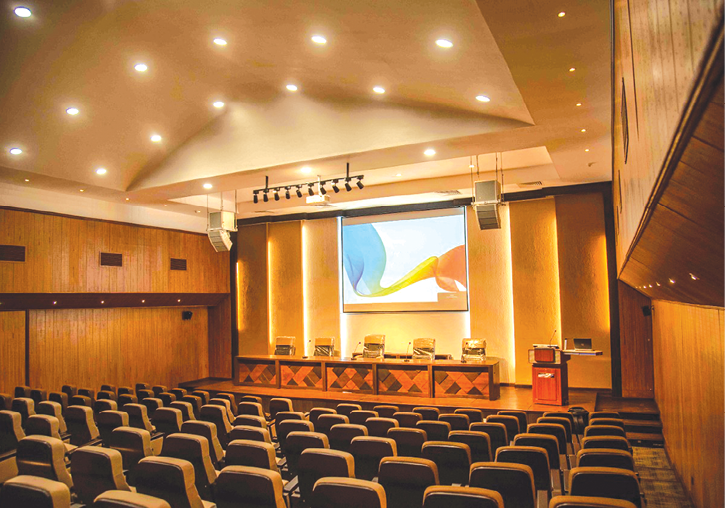
4. Sustainable supply chain
Logistical Framework: Choreography of supplies
The Bank continued to expand its networks of business partners in 2022 to ensure smooth operations in a time of crisis. The trusted connectivity between Bank and suppliers provides technology platforms, market access, and necessary material and other services, to perpetuate supply chains that are at the heart of a Bank’s operations. During 2022, the Bank engaged with over 1,500 business partners to efficiently and reliably manage the banking operations. An e-procurement system launched in 2020 to assist the dialogue between supplier and Bank during the extended pandemic time frame, continued to function as a critical supplier base to minimise reverberations of COVID-19-related impacts on banking operations and employee health.
The pandemic issued new challenges to the banking ecosystem such as shortages of fuel. An efficient fuel supply was a key factor mandatory in many areas of operation such as operating generators, cash transport, and loading of ATM machines, as well as implementing the “Bank on Wheels” service. The Bank always adhered to global best practices in the acquisition of supplies from trusted sources which was rewarded with an above par supply chain ensuring smooth continuity of operations. The supply chain logistics were also calibrated with adequate supply of consumables to each branch, with high usage branches stocked up with higher volumes of consumables. The essential stocks were replaced with minimum complacency to ensure the uninterrupted continuity of banking operations.
The procurements stayed true to uncompromised quality, with newer windows for digital products and novel back end tools. Information Technology was the single biggest investment of the Services Division amounting to over Rs. 1.2 Bn. The procurements in relation to hardware and software were made through the strong supplier business partner relationships nurtured over the years. Cost management was an essential and fundamental criterion in the astute governance of costs for trailblazing digital innovations.
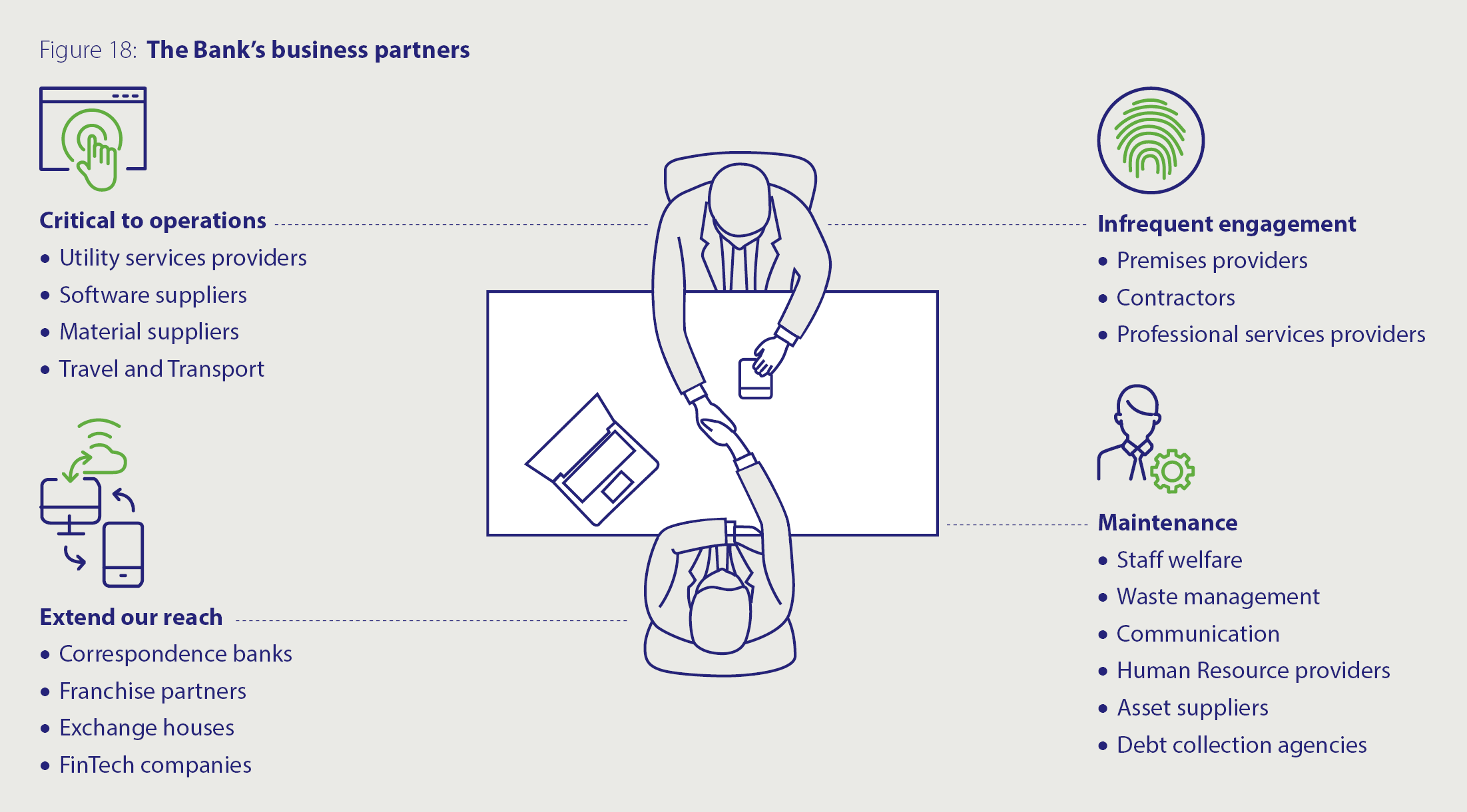
A technical introduction to the practice of procurement was the slow infusion of artificial intelligence (AI) into the procurement process, for best placement of supply materials in the utility pipelines, to improve overall efficiency of the procurement exercises, bolster the underlying business intelligence, and to offset traditional procurement practices that can compromise the punctuality of supply chains.